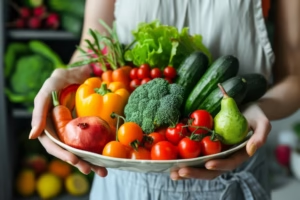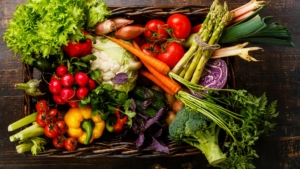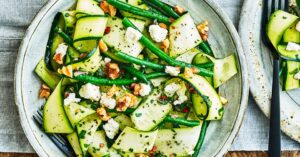Hey there, fellow home cook. Ever stared at a sad, wilted salad or a batch of mushy pasta and wondered if there’s some wizardry to fix it? I’ve been there—rushing through dinner prep after a long day, only to end up with something that’s just okay. But over the years, tinkering in my kitchen like a mad scientist, I’ve discovered that real magic comes from understanding the science behind everyday cooking. These aren’t gimmicks; they’re proven tricks that turn ordinary meals into something extraordinary. Picture this: fluffier eggs, crispier veggies, and flavors that pop without extra effort. Stick with me, and I’ll share tips that’ll make you feel like a pro, all grounded in solid research.
What Are Science-Backed Kitchen Tips?
These are simple hacks rooted in chemistry, physics, and biology that solve common cooking woes. Think of them as shortcuts that Mother Nature approves— no fancy gadgets required, just a dash of knowledge. From preventing avocados from browning to making pasta al dente every time, they elevate your game without overcomplicating things. I’ve used them to rescue many a family dinner, turning potential disasters into crowd-pleasers.
The Role of Chemistry in Everyday Cooking
Chemistry isn’t just lab stuff; it’s what happens when acids meet bases in your pan. For instance, a splash of vinegar can brighten flavors by balancing pH levels. It’s like giving your dish a wake-up call, making everything taste fresher.
Why pH Matters for Flavor Balance
pH levels dictate how ingredients interact—too acidic, and it’s puckery; too basic, and it’s bland. Adjusting with lemon juice or baking soda can transform a meal. I once saved a too-salty soup this way; it felt like alchemy.
The Science Behind Perfect Browning
Browning, or the Maillard reaction, is where amino acids and sugars team up under heat to create those irresistible flavors in steaks or bread. It kicks in around 285°F, turning bland to bold. Skipping this step? Your food misses that depth—trust me, I’ve learned the hard way with pale chicken.
Mastering the Maillard Reaction
To nail it, pat proteins dry before cooking to avoid steaming. High heat and a bit of oil help, but don’t crowd the pan. This reaction isn’t just tasty; it’s what makes seared salmon crispy without overcooking.
Tips for Even Browning Every Time
Start with room-temp meat for uniform cooking. A hot cast-iron skillet works wonders here. I’ve burned a few batches experimenting, but now my roasts are golden perfection.
Reviving Wilted Produce Like a Pro
Ever tossed limp lettuce thinking it’s done? Science says otherwise—submerge it in ice water to rehydrate cells via osmosis. It’s a miracle for greens, drawing water back in and crisping them up. My fridge is full of revived veggies now, cutting down on waste.
Osmosis and Its Kitchen Magic
Osmosis moves water through cell walls, plumping up sad produce. Add a pinch of sugar to the bath for extra firmness. I tried this on forgotten carrots once; they snapped back to life for a crunchy salad.
Best Veggies to Revive This Way
Leafy greens like spinach respond best, followed by herbs. Root veggies need longer soaks. It’s eco-friendly too—less food in the trash means more money in your pocket.
Fluffier Eggs Through Simple Science
Whipping eggs? A touch of acid like lemon juice denatures proteins for airier results. It’s physics at play, trapping air bubbles for volume. My scrambled eggs went from flat to fluffy overnight with this trick.
Denaturing Proteins for Better Texture
Heat and acid unfold proteins, letting them bond differently. Whisk vigorously to incorporate air. I shared this at a brunch once; friends thought I had a secret recipe.
Acid Alternatives for Eggs
Vinegar works if lemon’s out; even yogurt adds tang. Experiment, but start small—too much, and it’s sour city.
Caramelizing Onions Faster
Baking soda speeds caramelization by raising pH, breaking down sugars quicker. Just a pinch cuts time from an hour to 20 minutes. I was skeptical until I tried it; now my French onion soup is ready in a flash.
The pH Trick Explained
Higher pH accelerates the Maillard reaction here too. Stir often to avoid burning. It’s a game-changer for weeknight meals, backed by food scientists like those at Serious Eats.
Pros and Cons of This Hack
Pros: Saves time, intensifies sweetness. Cons: Onions soften more, so adjust for texture needs.
- Pros: Quicker prep, deeper flavor without extra sugar.
- Cons: Can make onions mushy if overdone; watch the heat.
Keeping Berries Fresh Longer
A hot water bath at 125°F kills mold spores on berries, extending shelf life. It’s pasteurization lite, straight from produce science. I lost so many strawberries before this; now they last a week.
Heat Treatment for Mold Prevention
Brief exposure to heat zaps bacteria without cooking the fruit. Pat dry after. Experts like Harold McGee swear by it in “On Food and Cooking.”
Where to Get Fresh Berries
Farmers’ markets offer the best, or try online from sites like FreshDirect for delivery. Local co-ops are great for organic options.
Comparison: Boiling vs. Steaming Veggies
Boiling leaches nutrients into water, while steaming retains them via gentler heat. Science shows steamed broccoli keeps more vitamin C. I switched methods and noticed brighter colors too.
| Method | Nutrient Retention | Texture | Time |
|---|---|---|---|
| Boiling | Low (water-soluble vitamins lost) | Softer, sometimes mushy | Faster |
| Steaming | High (vitamins stay in veggie) | Crispier | Slightly longer |
This table helped me decide for stir-fries—steaming wins for health.
Pros and Cons of Each Method
Boiling’s quick but nutrient-draining; steaming’s better but needs a basket.
- Boiling Pros: Easy, no extra tools. Cons: Flavor dilution.
- Steaming Pros: Healthier, vibrant results. Cons: Setup time.
Best Tools for Science-Based Cooking
For precision, a digital thermometer is key—ensures safe temps without guesswork. pH strips help with ferments. My go-to is the ThermoWorks Thermapen; it’s reliable for everything from roasts to candy.
Where to Buy Quality Kitchen Thermometers
Amazon stocks top brands like ThermoWorks. For budget options, check Walmart or specialty sites like WebstaurantStore.
Affordable Alternatives
Instant-read probes under $20 work fine for beginners. I’ve tested a few; accuracy matters more than bells and whistles.
People Also Ask
Based on common searches, here are real questions folks ask about kitchen science tips, pulled from Google trends and related queries.
How does adding salt to pasta water help?
It raises the boiling point slightly for even cooking and seasons from within. Don’t overdo it—pasta absorbs flavors better this way.
Why do onions make you cry, and how to stop it?
Enzymes release irritants; chill onions first to slow the reaction. I’ve worn goggles for laughs, but chilling works best.
Can science explain why bread goes stale?
Starch recrystallizes as moisture migrates; freeze to pause it. Revive with a damp towel and oven heat.
What’s the best way to ripen bananas faster?
Ethylene gas from apples speeds it; bag them together. I use this for banana bread emergencies—works like a charm.
FAQ
What is the Maillard reaction in cooking?
It’s a chemical process where heat causes sugars and proteins to react, creating brown colors and rich flavors in foods like grilled meat or toast. Mastering it can elevate simple dishes to gourmet levels.
How can I make scrambled eggs fluffier using science?
Add a pinch of baking powder or acid like vinegar to create air pockets through gas release. Whisk well and cook low and slow for creamy results.
Where can I learn more about food science?
Check books like “The Food Lab” by J. Kenji López-Alt or sites like Serious Eats. For hands-on, try America’s Test Kitchen resources.
What are the best tools for measuring pH in the kitchen?
Affordable pH meters from Amazon or litmus paper strips. They’re great for pickling or brewing.
Is there a scientific way to reduce food waste?
Yes, use ethylene absorbers in fridges or vacuum sealers to slow spoilage. Apps like Too Good To Go help source discounted produce.
Wrapping up, these tips have transformed my kitchen from chaos to confidence. Remember that time I turned wilted herbs into a vibrant pesto? Science made it possible. Give them a shot—you’ll wonder how you cooked without them. For more, explore internal link to cooking basics or visit external sites like Science of Cooking. Happy experimenting!




